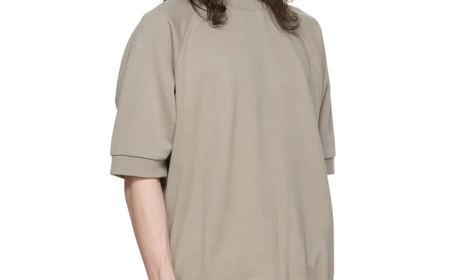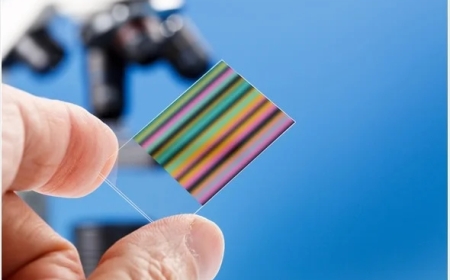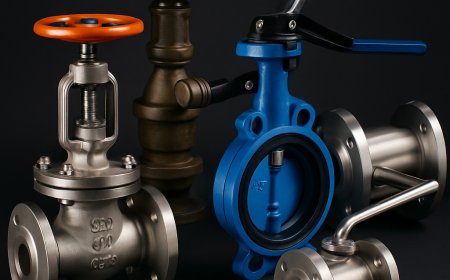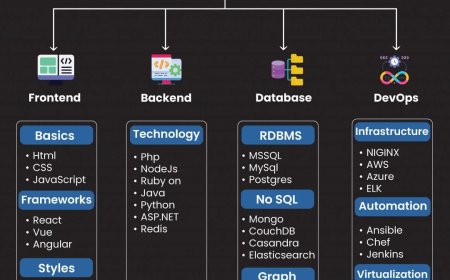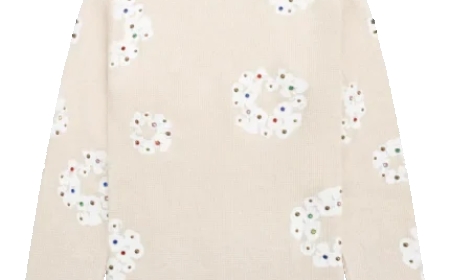Fabric-Savvy Digitizing Embroidery Service 2025
Discover a digitizing embroidery service that understands fabric types in 2025. Learn best embroidery digitizing practices for perfect results.

A digitizing embroidery service creates digital stitch files tailored for various fabrics, ensuring flawless embroidery on materials like cotton, polyester, or knits. In 2025, understanding fabric types is critical for achieving high-quality designs that suit diverse apparel needs. This blog explores how a digitizing embroidery service with fabric expertise delivers superior results, covering techniques, benefits, and best practices for fabric-specific embroidery.
By partnering with a service that prioritizes fabric knowledge, you can achieve durable, vibrant designs across garments. The best embroidery digitizing practices ensure stitch files match fabric characteristics, enhancing project outcomes. Lets dive into the essentials of fabric-specific embroidery digitizing.
Why Fabric Knowledge Matters in Embroidery Digitizing
Different fabrics, such as stable cotton, stretchy knits, or delicate silk, require unique stitch settings to prevent issues like puckering, stretching, or thread breaks. A digitizing embroidery service that understands fabric types adjusts stitches, density, and underlay to suit each material, ensuring designs look sharp and last longer. This expertise is crucial for applications like uniforms, sportswear, or fashion.
In 2025, businesses and designers rely on fabric-savvy digitizing to maintain quality across diverse projects. Proper fabric handling enhances design clarity, durability, and client satisfaction, making it a cornerstone of professional embroidery services.
Key Challenges in Fabric-Specific Digitizing
Digitizing for various fabrics presents unique challenges:
-
Stretchy Fabrics: Knits or spandex require flexible stitches to avoid distortion.
-
Delicate Materials: Silk or chiffon need light settings to prevent damage.
-
Thick Fabrics: Denim or fleece demand robust stitches for coverage.
-
Mixed Fabrics: Blends require balanced settings for consistency.
A professional service addresses these challenges, ensuring stitch files perform optimally. Their expertise in the embroidery digitizing process is vital for fabric-specific projects in 2025.
Addressing Fabric Challenges
To overcome obstacles, services use these:
-
Adjust for Stretch: Use light density for knits or spandex.
-
Protect Delicates: Apply minimal stitches for silk.
-
Reinforce Thick Fabrics: Use heavy stitches for denim.
-
Balance for Blends: Optimize settings for mixed materials.
Strategic solutions enhance fabric-specific embroidery.
Step 1: Analyze Artwork with Fabric in Mind
A digitizing service starts by analyzing artwork, considering the target fabric to ensure compatibility. They prefer vector files (.SVG, .AI) or high-resolution bitmaps (300 DPI) for clarity, simplifying details for delicate or stretchy materials. They confirm design placement, such as chest or sleeve, suits the fabrics properties.
This analysis ensures the stitch file aligns with the fabrics characteristics, preventing issues like distortion or thread breaks. Thorough artwork preparation is a key step in fabric-specific embroidery digitizing, setting the foundation for success in 2025.
Artwork Analysis Tips
To prepare artwork, services use these:
-
Use Vector Files: Ensure precision for fabric adaptability.
-
Simplify for Delicates: Adjust details for lightweight fabrics.
-
Match Fabric Needs: Plan stitches for material properties.
-
Preview Digitally: Visualize designs on target fabrics.
Accurate analysis drives fabric-specific success.
Step 2: Select Stitch Types for Fabric Compatibility
Satin stitches (4-8mm) are ideal for stable fabrics like cotton, offering a glossy finish, while running stitches suit delicate materials like silk to reduce stress. Fill stitches cover larger areas on thick fabrics like denim, ensuring durability. Digitizing services select stitches based on fabric type, testing on samples to confirm performance.
Choosing the right stitch type prevents issues like puckering or thread breaks, ensuring designs look professional. Strategic stitch selection is essential for fabric-specific embroidery in 2025.
Stitch Selection Strategies
To choose stitches, services use these:
-
Satin for Stable Fabrics: Use for cotton or twill logos.
-
Running for Delicates: Apply light stitches for silk.
-
Fill for Thick Materials: Ensure coverage on denim or fleece.
-
Test Stitches: Verify compatibility with fabrics.
Tailored stitches optimize fabric designs.
Step 3: Optimize Stitch Density and Underlay
Stitch density varies by fabric: lower density (e.g., 0.5mm spacing) suits stretchy knits to maintain flexibility, while higher density works for stable cotton. Light underlay, like zigzag, stabilizes delicate fabrics, while heavy underlay (e.g., grid) supports thick materials. Digitizing services adjust these settings to match fabric properties, preventing distortion.
Digital previews and fabric tests confirm density and underlay performance, ensuring designs are durable and clear. Optimized settings are a cornerstone of the best embroidery digitizing practices for fabric-specific projects in 2025.
Density and Underlay Tips
To optimize settings, services use these:
-
Lower Density for Stretch: Ensure flexibility for knits.
-
Higher Density for Stable: Provide coverage for cotton.
-
Light Underlay for Delicates: Stabilize silk or chiffon.
-
Test on Samples: Confirm settings for fabric types.
Custom settings enhance fabric embroidery.
Step 4: Plan Stitch Paths for Fabric Stability
Stitch paths impact fabric stability, especially on stretchy or delicate materials. Digitizing services plan paths to start from the designs center, moving outward to distribute tension evenly, minimizing stress on knits or silk. They reduce thread trims to prevent fabric damage and improve efficiency.
Aligning paths with fabric grain or stretch ensures designs remain stable and aligned. Efficient path planning is vital for professional fabric-specific embroidery digitizing in 2025.
Path Planning Strategies
To plan paths, services use these:
-
Center-Out Paths: Reduce tension on stretchy fabrics.
-
Minimize Trims: Sequence for continuous stitching.
-
Align with Grain: Follow fabric for stability.
-
Preview Paths: Ensure flow prevents distortion.
Optimized paths improve fabric designs.
Step 5: Test Designs on Specific Fabrics
Testing ensures stitch files perform well on target fabrics. Digitizing services stitch samples on materials like cotton, knits, or denim, using identical threads and stabilizers as the final product. They inspect for clarity, alignment, and durability, adjusting settings if issues like puckering or thread breaks occur.
Rigorous testing guarantees designs suit the fabrics properties, ensuring client satisfaction across apparel types. This iterative process is a key part of quality fabric-specific embroidery digitizing in 2025.
Testing Best Practices
To test designs, services use these:
-
Match Target Fabrics: Use identical materials for accuracy.
-
Inspect Performance: Check for distortion or thread issues.
-
Verify Durability: Ensure stitches withstand wear.
-
Refine Settings: Adjust based on sample results.
Testing ensures flawless fabric embroidery.
Common Fabrics and Their Digitizing Requirements
Understanding fabric types is critical for digitizing success:
-
Cotton: Stable, supports standard satin or fill stitches with moderate density.
-
Polyester/Knits: Stretchy, requires light density and cut-away stabilizers.
-
Silk/Chiffon: Delicate, needs minimal stitches and wash-away stabilizers.
-
Denim/Fleece: Thick, demands heavy stitches and grid underlay.
Digitizing services tailor stitch files to these fabrics, ensuring optimal performance. Fabric expertise enhances design quality across diverse projects in 2025.
Fabric-Specific Tips
To handle fabrics, services use these:
-
Cotton Settings: Use moderate density for clear designs.
-
Knits Stabilizers: Apply cut-away for stretch support.
-
Silk Precautions: Use light stitches and wash-away stabilizers.
-
Denim Reinforcement: Add heavy underlay for durability.
Fabric knowledge boosts embroidery results.
Special Techniques for Fabric-Specific Designs
Certain fabrics benefit from specialty techniques:
-
3D Puff for Denim: Uses dense satin and foam for bold effects.
-
Appliqu for Knits: Layers fabric to reduce stitch counts on stretchy materials.
-
Metallic Threads for Silk: Adds shine with low density to prevent damage.
Digitizing services adjust these techniques for fabric compatibility, ensuring durability and aesthetics. Specialty expertise elevates fabric-specific embroidery in 2025.
Special Technique Strategies
To digitize specialty techniques, services use these:
-
Puff for Thick Fabrics: Adjust density for denim or fleece.
-
Appliqu for Stretch: Reduce stitches on knits.
-
Metallic for Delicates: Use light settings for silk.
-
Test Techniques: Verify performance on fabrics.
Specialty techniques enhance fabric designs.
Benefits of Fabric-Savvy Digitizing Services
A fabric-knowledgeable digitizing service offers:
-
Design Durability: Ensures stitches suit fabric properties.
-
Visual Clarity: Maintains sharp designs across materials.
-
Versatility: Adapts to diverse apparel like uniforms or fashion.
-
Client Satisfaction: Delivers tailored, professional results.
These benefits make fabric expertise essential for embroidery projects in 2025, supporting varied applications with precision.
How Technology Supports Fabric-Specific Digitizing
Modern technology enhances fabric-specific digitizing:
-
3D Previews: Visualize designs on different fabrics.
-
Auto-Density Tools: Adjust stitches for fabric types.
-
Fabric Simulation Software: Test settings virtually.
-
Cloud Collaboration: Share fabric-specific previews with clients.
These tools ensure precise, fabric-tailored stitch files, improving efficiency. Technology is a key enabler of the best embroidery digitizing practices for fabric-specific projects in 2025.
Technology Utilization Tips
To leverage technology, services use these:
-
Use 3D Previews: Check design fit on fabrics.
-
Apply Auto-Density: Optimize for material properties.
-
Simulate Fabrics: Test settings for compatibility.
-
Share via Cloud: Collaborate securely with clients.
Technology boosts fabric-specific precision.
Collaborating with a Fabric-Savvy Digitizing Service
Clients support fabric-specific digitizing by providing clear artwork and fabric details, such as cotton, knit, or denim specifications. Digitizing services request vector files and information like garment type or placement, offering previews for feedback. Clear communication ensures stitch files match fabric needs, reducing revisions.
Prompt feedback on test samples refines designs, aligning with project goals. Effective collaboration is critical for successful fabric-specific embroidery in 2025.
Collaboration Best Practices
To collaborate effectively, use these:
-
Submit Vector Artwork: Provide .SVG or .AI for clarity.
-
Specify Fabric Types: Note material and stretch properties.
-
Review Previews Promptly: Approve fabric-specific designs.
-
Test Samples Quickly: Confirm results for accuracy.
Client collaboration ensures fabric success.
Applications of Fabric-Specific Embroidery Digitizing
Fabric-specific digitizing enhances various projects:
-
Corporate Uniforms: Tailors logos for cotton or polyester shirts.
-
Sportswear: Optimizes designs for stretchy jerseys or knits.
-
Fashion Apparel: Enhances silk or denim with custom patterns.
-
Promotional Items: Adapts designs for fleece bags or caps.
These applications showcase the versatility of fabric-savvy digitizing services.
Tips for Clients Using Fabric-Specific Digitizing Services
Clients can optimize their experience with these tips:
-
Provide Detailed Fabric Info: Specify material type and properties.
-
Submit Scalable Artwork: Use vector files for precision.
-
Clarify Design Goals: Note placement or specialty techniques.
-
Review Previews Quickly: Approve designs to avoid delays.
-
Test Samples Early: Confirm fabric compatibility before production.
These strategies ensure successful fabric embroidery.
Conclusion
A digitizing embroidery service that understands fabric types excels by analyzing artwork, selecting fabric-appropriate stitches, optimizing density and underlay, planning stable paths, and testing rigorously. By addressing challenges like stretchy or delicate materials and leveraging technology for precision, these services deliver durable, vibrant designs for uniforms, sportswear, and fashion in 2025. The best embroidery digitizing practices prioritize fabric expertise for flawless results. Partner with a fabric-savvy digitizing service today to elevate your embroidery projects with tailored, high-quality designs.
FAQs
Q: Why is fabric knowledge key for a digitizing embroidery service?
It ensures stitches match fabric properties, preventing issues like distortion or puckering for optimal results.
Q: How does testing support fabric-specific digitizing?
Testing verifies stitch performance on fabrics, ensuring clarity, durability, and compatibility with materials.
Q: What fabrics require special digitizing considerations?
Stretchy knits, delicate silk, and thick denim need tailored stitches and stabilizers for quality embroidery.
Q: How does technology aid fabric-specific digitizing?
3D previews, auto-density tools, and fabric simulation software ensure precise, material-tailored stitch files.
Q: How can clients support fabric-specific digitizing services?
Provide vector artwork, specify fabric details, review previews promptly, and test samples for accuracy.



